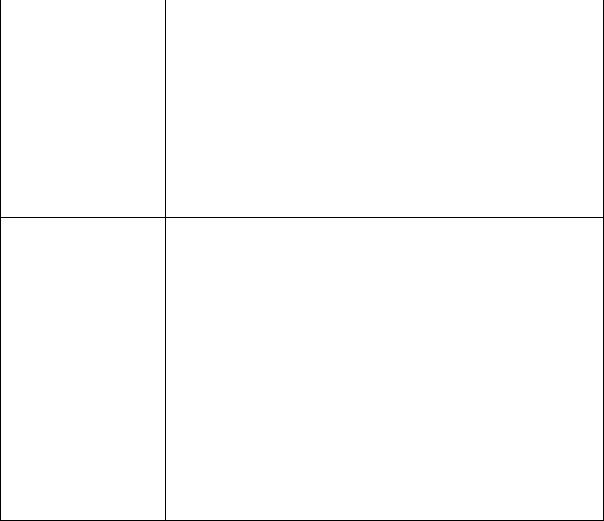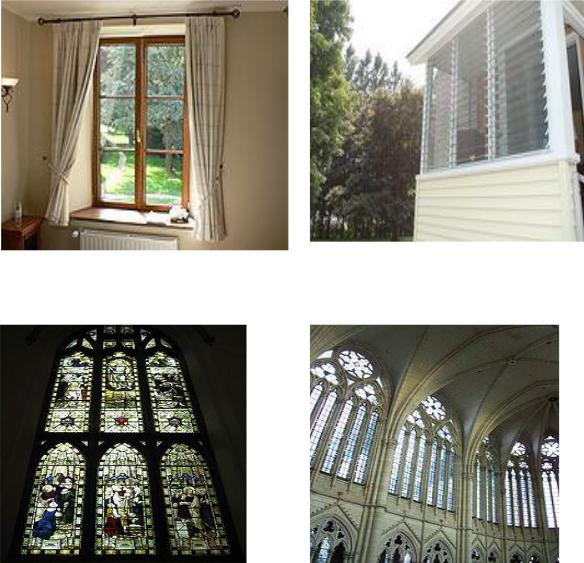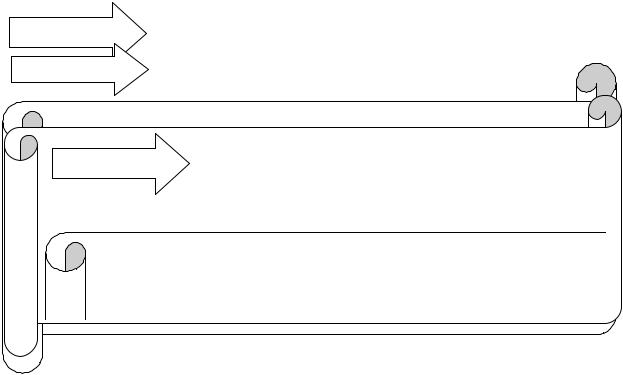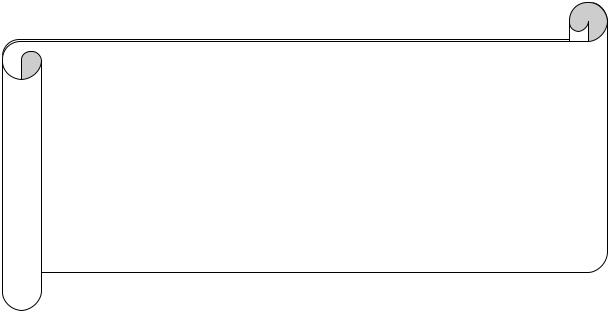
Пособия / english-for-builders-and-architects
.pdf
opened and closed came next. Over time, windows were built that both protected the 3)_____ from the elements and transmitted light: mullioned glass windows, which joined multiple small pieces of glass with leading, paper windows, flattened pieces of translucent animal horn, and plates of thinly sliced 4) _____. The Romans were the first to use 5) _____ for windows. In Alexandria ca. 100 CE, cast glass windows, albeit with poor optical properties, began to appear. Mullioned glass windows were the windows of choice among European well-to-do, whereas paper windows were 6) _____
and widely used in 7) _____ China, Korea and Japan. In England, glass became common in the windows of 8) _____ homes only in the early 17th century whereas windows made up of panes of flattened animal horn were used as early as the 14th century 9) _____ in Northern Britain. Modern-style 10) _____ became possible only after the industrial glass making process was perfected.
inhabitants, ordinary, century, holes, shutters, floor-to-ceiling,
glass, ancient, marble, economical
10 Fill in the gaps in the following passage with the suitable preposition given below:
Daylighting is the practice 1) _____ placing windows or other openings and reflective surfaces so that 2) _____ the day natural light provides effective internal lighting. Particular attention is given 3) ) _____ daylighting while designing a building when the aim is to maximize visual comfort or to reduce energy use. Energy savings can be achieved either 4) _____ the reduced use 5) _____ artificial (electric) lighting or 6) _____ passive solar heating or cooling. Artificial lighting energy use can be reduced 7) _____ simply installing fewer electric lights because daylight is present, or 8) _____
dimming/switching electric lights automatically 9)_____ response 10)_____ the presence of daylight, a process known as daylight harvesting.
by (x2) , during, |
from (x2) , in, |
of |
(x2), |
to (x2) |
|
11 Match the term with its definition:
11

1) double-hung sash |
a) ) a window (more usually a door-sized window) where |
|||||
window |
the |
sash tilts |
inwards at the |
top and |
then slides |
|
horizontally behind the fixed pane |
|
|||||
|
|
|||||
|
b) ) a window composed of pieces of colored glass, |
|||||
2) casement window |
transparent, translucent or opaque, frequently portraying |
|||||
|
people or scenes |
|
|
|
||
|
|
|
|
|
|
|
3) tilt and slide |
c) |
) also known |
as a louvered |
window, it |
consists of |
|
parallel slats of glass or acryl that open and close like a |
||||||
window |
||||||
Venetian blind, usually using a crank or a lever |
||||||
|
||||||
4) transom window |
d) ) a window big enough and low enough so that |
|||||
occupants can escape through the opening in an |
||||||
|
emergency, such as a fire |
|
|
|||
|
e) ) also known as a French door, it is really a type of |
|||||
5) jalousie window |
door, but one which has one or more panes of glass set |
|||||
|
into the whole length of the door , meaning it also |
|||||
|
functions as a window |
|
|
|||
f)) the traditional style of window in the UK with two
6)clerestory window parts that overlap slightly and slide up and down inside
|
the frame |
|
7) fixed window |
g) ) a window set in a roof structure or high in a wall, |
|
used for daylighting |
||
|
||
|
h) ) a window with a hinged sash that swings in or out |
|
8) emergency exit/ |
like a door comprising either a slide-hung, top-hung, or |
|
egress window |
occasionally bottom-hung sash or a combination of these |
|
types, sometimes with fixed panels on one or more slides |
||
|
||
|
of the sash |
|
9) stained glass |
i) ) a window that cannot be opened, whose function is |
|
window |
limited to allowing light to enter |
|
10) french window |
j) ) a window above a door; it provides ventilation before |
|
|
forced air heating and cooling |
12 Look at the pictures and name the type of the window using information from Ex.11:
12

a)____________________ |
b) |
_________________ |
|
1.с) ___________________ |
__ |
d) |
_________________ |
|
|
13 Fill in the gaps with the derivatives of the words in capitals:
Benefits of Daylighting
Daylighting has the potential to significantly improve |
PRODUCE |
|
life-cycle cost, increase user 1) _____, reduce emissions, |
||
and reduce operating costs: |
|
|
Improved Life-Cycle Cost: At an 2) |
_____ |
ESTIMATE |
incremental first cost increase of from $0.50 to $0.75 per |
|
|
square foot of occupied space for dimmable ballasts, |
|
|
fixtures and controls, daylighting has been shown to save |
ANNUAL |
|
from $0.05 to $0.20 per square foot 3) _____. |
|
|
Increased User Productivity: Daylight |
enlivens |
|
spaces and has been shown to increase user satisfaction and |
|
|
13

4) _____ comfort leading to improved performance. |
VISION |
|
Reduced Emissions: By reducing the need for electric |
CONSUME |
|
electric 5) _____ for lighting and cooling, the use of |
||
daylight reduces greenhouse gases and slows fossil fuel |
|
|
depletion. |
|
|
Reduced Operating Costs: Electric lighting accounts |
|
|
for 35 to 50 percent of the total electrical energy |
|
|
consumption in commercial buildings. By generating waste |
EQUIP |
|
heat, lighting also adds to the loads imposed on a building's |
||
mechanical cooling |
6) _____. The energy savings from |
|
reduced electric lighting through the use of daylighting |
|
|
strategies can directly reduce building cooling energy usage |
COMMERCE |
|
an additional 10 to 20 percent. Consequently, for many |
||
institutional and |
7) _____ buildings, total energy |
|
costs can be reduced by as much as one third through the |
|
|
optimal integration of daylighting strategies. |
DESIGN |
|
As with all energy-efficient design strategies, there are |
||
some costs associated with the use of daylighting. 8) _____ |
PLACE |
|
must be sure to avoid glare and overheating when 9) _____ |
|
|
windows. More windows do not automatically result in |
|
|
more daylighting. That is, natural light has to be controlled |
|
|
and distributed properly throughout the workspace. Also, |
|
|
for cost savings to be realized, controls have to be in proper |
|
|
functioning order. Poor 10) _____, commissioning, or |
INSTALL |
|
Operations and Maintenance (O&M) practices can all lead |
||
to sub-optimum performance. |
|
|
|
(by Gregg D. Ander, FAIA) |
|
WRITING |
|
|
Summary Writing
STRATEGY POINT: Introduction to Summary Writing
Before doing anything, read the summary question carefully.
Next read the two texts and underline any information which is relevant
WRITING
to the summary question.
STRATEGY POINT: Introduction to Summary Writing
Before doing anything, read the summary question carefully.
Next read the two texts and underline any information which is relev to the summary question.
14
Summary Writing
14 a) Read the texts and summary questions below:
1.What does capacity for change lead to?
2.What natural changes are mentioned?
3.What is said about modelling of a shape?
4.What is the most usual daylight modelling derived from?
5.What is the role of change and modelling in daylighting?
|
CHANGE |
|
|
MODELLING |
||
Capacity for change leads to the |
Modelling of a shape derives from its |
|||||
infinite variety in appearance of the |
physical form, whether round, square or |
|||||
daylit interior. Change is at the heart |
otherwise, coupled with the way in which |
|||||
of daylighting, the human body has a |
light plays on its surfaces. This is referred |
|||||
capacity for adaptation, particularly in |
to as its modelling and when this derives |
|||||
vision, and the need to exercise this |
from daylight or sunlight, giving light |
|||||
response. |
|
|
|
|
from a single direction, |
this provides a |
|
|
|
|
form which is perceived by the eye as |
||
Perception |
reacts |
to |
a |
degree of |
||
change; it is the natural order of |
having meaning, unambiguous. This is a |
|||||
different experience again from the form |
||||||
things that the appearance of interior |
of an object or space resulting from a |
|||||
spaces alter with time; an entirely |
room lit by artificial light, where the |
|||||
different measure of experience to |
overall light may be received from a |
|||||
the static qualities of spaces lit |
multitude of light sources. The most usual |
|||||
entirely by artificial sources of light |
daylight modelling is that derived from |
|||||
during the day; or where there is no |
vertical windows at the side of a room, |
|||||
access to the daylight outside. |
giving light from a single direction; this |
|||||
There is a natural process of |
may be helped by windows from an |
|||||
renewal in |
the |
photochemical |
adjacent wall which adds to the |
|||
processes of the eye as it adapts to |
modelling; as the light will still be from |
|||||
accommodate |
changes |
in |
daylight. |
the same overall direction, but adding to |
||
First there is the natural change from |
the total modelling. |
Two examples |
||||
|
|
|
|
|
|
|
|
|
|
|
|
|
15 |

day to night, from first light until dark |
might be used to emphasize this, the first, |
|||
and the need for artificial sources to |
a Greek Doric column where the light of |
|||
take over when daylight fades. Then |
day gives modelling to the entasis on the |
|||
there are the changes associated with |
rounded surfaces of the column; light |
|||
changes of the weather; from bright |
which emphasizes its particular rounded |
|||
sunny days to dark and cloudy or |
quality together with its verticality. The |
|||
rainy days, there is little doubt that |
second example is the original David |
|||
the human spirit soars when rising in |
statue by Michelangelo seen in its setting |
|||
the morning on |
a bright |
day, an |
in the art gallery in Florence, lit from |
|
experience which is less likely to |
daylight above, where the form changes |
|||
in time as the day goes by. Daylight by its |
||||
happen when it is dark and gloomy |
nature gives meaning and aids our |
|||
outside. |
Closely |
associated with |
understanding of a shape or space by its |
|
changes in the weather are those of |
directional flow. Interior spaces are |
|||
the changes of season, from the |
judged to be pleasant, bright or gloomy as |
|||
winter snows to summer sunlight. The |
a result of the effects of modelling and |
|||
world |
outside, |
as experienced |
interiors are judged by the way in which |
|
through |
the |
window, |
provides |
the spaces and the objects within them are |
necessary information of the variety |
seen during the day to be natural, or |
|||
of the exterior world; whilst leading |
accord to our experience of the natural |
|||
to subtle changes in the appearance |
world. |
|||
of the interior. |
|
|
|
|
b)In a paragraph of 120-–150 words, and using your own words as far as possible, summarize the role of change and modelling in daylighting.
LISTENING
LISTENING
15 Listen to Greg Deale - – the general manager of the Daylight Designs Designs – - and answer the questions given:
1.Where can Solatube Daylighting Systems (SDS) be applied?
2.What are the benefits of SDS?
3.Due to which property can SDS be applied not only in a one-storey but a five-storey building and more?
4.How much time does it take to install SDS product? Are there any problems to install it?
5.What accessories can be added to the SDS product?
6.How many years is warranty for the SDS product covered by?
16VIDEO

16 16 Watch the video “Solatube interview at the Better Homes & Gardens Live expo - – Sydney 2010”. Present the main idea of the video in 4-5 sentences using the expressions from Appendix 2.
SPEAKING
17 Make up a dialogue using the information from the Ex. 19, 20. One of the students is Solatube Daylighting Systems manager and another one is a customer.
18 Study the table and put the materials in the order of your preference. Discuss it with your partner using the expressions from Appendix 1:
FRAME and SASH CONSTRUCTION
Frames and sashes can be made of the following materials:
Material |
Thermal |
Durability |
Mainte- |
Cost |
Recycled |
Comment |
|
resistance |
nance |
content |
|||||
|
|
|
|
|
|
shrinks and |
|
wood |
very good |
variable |
high |
high |
low |
swells with |
|
humidity |
|||||||
|
|
|
|
|
|
||
|
|
|
|
|
|
change |
17

vinyl or pvc |
very good |
good* |
low |
low |
very low |
|
|
bad** |
|
|
|
typically |
used in most |
aluminum |
good |
very low |
low |
large |
||
|
|
|
|
|
>95% % |
structures |
|
|
|
|
|
|
|
|
|
|
|
|
|
typically |
steel |
medium |
superior |
very low |
high |
>98% % |
welded at |
|
|
|
|
|
|
corner joints |
fiberglass |
very good |
very good* |
very low |
high |
medium |
|
* * Vinyl and fiberglass frames perform well in accelerated weathering tests. Because vinyl is not as strong as other materials, some vinyl frames are reinforced with metal or composite materials to improve their structural strength.
** Modern aluminium window frames are typically separated by a thermal break made of a polyamide. This greatly increases thermal resistance, while retaining virtually all of the structural strength.
19 Express your opinion on the problem raised in Ex. 15 and discuss it with your partner using the expressions from Appendix 1.
20 Read the abstract from a report “Solatube® Daylighting System” by Y. Selyanin and summarize it in 100-–150 words in English. Use clichés and word combinations from Appendix 2:
Новые энергоэффективные системы дневного освещения
“Solatube® Daylighting System” изменяют традиционные подходы к организации освещения помещений естественным светом и оказывают большое влияние на архитектуру и современное строительство в мире.
Работа системы Solatube® основана на современных технологиях передачи максимального количества дневного света, падающего на крышу дома, во внутренние помещения, с целью увеличения естественной освещенности от восхода до заката.
18
Система Solatube® состоит из светособирающего купола, располагаемого на крыше здания, выполненного из ударопрочного материала, который защищает от ультрафиолетового излучения; флешинга (адаптера под различные типы кровли); светодиода, представляющего собой набор стыкуемых алюминиевых труб прямолинейной или же изогнутой формы, покрытых изнутри многослойной пленкой из полимера, которая обеспечивает почти идеальную светопередачу 99,7% %; и диффузора (светорассеивателя), который устанавливается в потолке освещаемого помещения.
Система солнечного (естественного) освещения Solatube® обеспечивает максимальную передачу света без потерь на расстоянии до 20-ти метров с минимальным притоком солнечного тепла. С соотношением энергетической эффективности более чем в 2 раза большей, чем большинство светодиодов, Solatube® является наилучшим выбором для обеспечения естественного освещения любого помещения или пространства.
Система Solatube® имеет дополнительные опции (регулирование интенсивности светового потока), световой комплект для ночного времени суток, вентиляционный комплект), использование которых значительно расширяет практику ее применения в инновационном строительстве.
Использование технологий Solatube® в инвестиционных проектах обеспечит снижение эксплуатационных расходов, способствуя оздоровлению окружающей среды.
When summarizing the article use these words and word combinations:
энергоэффективный – power efficient, ; работа – operation;
передача максимального количества дневного света – maximum daylight transfer; светособирающий купол – light-collecting dome;
ударопрочный материал – impact material; ультрафиолетовое излучение – ultraviolet light; стыкуемые алюминиевые трубы – joining aluminium pipes; многослойная пленка – composite film;
минимальный приток солнечного тепла – minimum solar heat gain; снижение эксплуатационных расходов – lowering maintenance costs.
19

21 21 Information for curious ones:
The altitude, angle, and color of daylighting vary with compass orientation and time of a
The altitude, angle, and color of daylighting vary with compass orientation and day. In the northern hemisphere:
time of a day. In the northern hemisphere:
Daylight from NORTH – facing windows tends to be shadowless, diffuse, and neutral or
Daylight from NORTH – facing windows tends to be shadowless, diffuse, and slightly grayish most of the day and year.
neutral or slightly grayish most of the day and year.
Daylight from the EAST is strongest in the morning. It tends to be of low altitude, with
Daylightsoft, long shadows,from theandEASTgray-yellowis strongestin colorin.the morning. It tends to be of low altitude, withDaylightsoft,frlongm theshadows,SOUTHandisgraydominant-yellowfrominlatecolormorning. to mid-afternoon. It tends to renderDaylightcolorsfromaccuratelythe SOUTHand cast strong,is dominantcrisp shadowsfrom late. morning to mid-afternoon. It
Daylighttends to renderfrom thecolorsWESTaccuratelyis strongestand incastthestrong,late afternooncrisp shaandowsearly. evening and has a
rich gold-orange cast. It can penetrate deeply into buildings and occasionally be overbear-
Daylight from the WEST is strongest in the late afternoon and early evening and
ing.
has a rich gold-orange cast. It can penetrate deeply into buildings and occasionally be overbearing.
22 Topics for projects and presentations:
1.Types of windows.
2.Evolution of window production.
3.Stained-glass windows.
4.Window constructions and modern technologies.
5.Advanced technologies in window development.
Word List to Unit 1
slit window |
щелевое окно |
fortification, n |
крепость |
porthole, n |
небольшое отверстие |
pane, n |
оконное стекло |
dwelling, n |
жилище |
sophisticated, adj |
утонченный, изысканный |
vehicle, n |
средство передачи |
ultimately, adv |
в конечном счете, в конце концов |
mediaeval cathedral |
средневековый кафедральный собор |
infill, n |
заполнение |
external climate |
внешняя окружающая среда |
a slab of marble |
пластина/кусок мрамора |
sheets of mica |
листы слюды |
oiled paper |
промасленная бумага |
crude, adj |
необработанный |
domestic building |
жилое здание |
appearance, n |
внешний вид, наружность |
20 |
|
